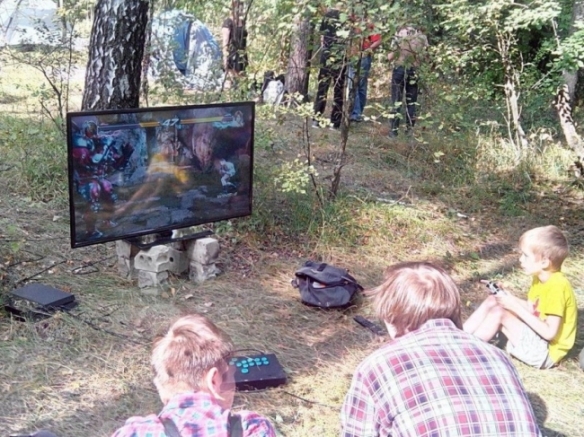https://youtu.be/Ak5X2aP4HzI
Only 3 more years and I’m outta here! Grumpy
Author: Grumpy

There are good, reliable, mass-produced guns available that are suitable for anything one could reasonably ask of them. The staff of Guns and Shooting Online, for example, have reviewed a vast array. Why do so many of us desire to own a custom made gun? The answer boils down to two things: Uniqueness and Art.
We have the opportunity to talk to a lot of firearms-oriented people.
One of the things we often hear is this little story: “I have a ‘custom’ 1911 pistol (or Ruger 10/22, AR, etc.). It has a __ brand barrel, a __ brand trigger, a __ brand stock, __ brand springs, etc, etc.
The truth is these are not custom-made guns! They are personalized guns. There are catalogs available with thousands of parts for mass-produced guns.
Most of these parts are owner-installable with little, or no, gunsmithing required. In this situation, 100 people could order the same parts and build the exact same personalized gun.
This is not a bad thing; these after-market parts are intended to improve a gun’s performance and/or appearance. However, a custom made gun they do not make.
What exactly makes a custom gun, like this 6.5x54mm Mannlicher-Schoenauer that Rocky just finished?
It goes back to those two words, Uniqueness and Art. There is not one single part in this rifle that can be ordered from a catalog or over the counter, including the screws.
That alone makes this gun unique. In addition, Rocky will never build another one like it. This design belongs to the owner of the gun and the design is the product of the owner’s artistic taste and functional desires.
The owner chose the style and pattern of engraving, the shape of the stock, the metal finishes, etc. It is truly a unique piece of firearms art that was built to fit the owner.
Rocky was contacted over two years ago by a customer in Europe about building a 6.5x54mm Mannlicher-Schoenauer hunting rifle. At first, he turned the job down, citing problems that he didn’t want to deal with.
However, the prospective owner was persistent and solved several of the initial problems himself, including finding a starter gun with a suitable action. The owner also selected a walnut stock blank and had it sent to Rocky from Europe.
After months of discussion and before any work had begun, Rocky and the owner put together a written plan for the new rifle.
Included in the plan, for example, were these requirements for the stock: European style cheek piece (the owner had another rifle with a cheek piece that he especially liked and asked to have the same style on the new gun), metal skeleton butt plate curled over the toe and heel of the stock, metal skeleton grip cap linked to the trigger guard, 2-screw inletted sling swivel bases, straight-cut ebony forend tip, enameled and inletted oval shield with initials, 26 lpi wrap-around field-point checkering, owner specified length of pull, hand-rubbed oil finish.
The customer wanted a Mannlicher-Schoenauer-based sporting rifle for European and African hunting. (The 6.5x54mm M-S is a classic European Alpine and African plains game cartridge.)
The action for this beautiful, custom-built sporter came from a Mannlicher-Schoenauer 1930 System military rifle. These rifles were produced from 1903 to the 1930’s for the Greek Army. In the United States, they are scarce.
The receiver had military stripper clip ears, which were removed and the receiver welded and configured to civilian specifications. All of the doner rifle’s parts, except for the basic receiver, bolt and Schoenauer rotary magazine, were discarded.
The wing safety on the bolt was changed to a thumb button on the bolt to accommodate scope mounting. EAW quick detachable scope rings and bases were installed on a hand made rear cantilever.
The military bolt handle was removed and replaced by a hand-forged, butter knife bolt handle. The bottom of the new bolt handle was hand-checkered at 26 lpi (same lpi as the stock). The side of the receiver was relieved to accept the lowered bolt handle.
The bolt was lapped to the receiver and the receiver faced to accept the 22″ Douglas XX 6.5mm barrel, chambered and throated specifically for 6.5×54 cartridges using the Woodleigh Weldcore 160 grain bullet.
A European walnut stock blank, chosen by the customer, was shaped to the customer’s specifications. The barreled action was hand-inletted to the stock and the receiver was pillar-bedded. The barrel was free-floated, with the barrel to forend gap held to a tight clearance of 0.010”.
A hand-made, single-set inertia trigger and sear mechanism were installed. To accommodate the new trigger and sear, the sear-to-bolt engagement was reconfigured. A hand-forged, beaded trigger guard with a tang extending all the way to the grip cap was fitted.
The grip cap is a hand-forged, skeleton type and the central walnut is checkered. The butt plate is also a hand-forged, skeleton type that curls over the butt stock’s heel and toe. Again, the revealed central wood is checkered. Hand made, two-screw sling swivel bases were fabricated with stops so the sling swivel cannot hit the wood.
There are NO over-the-counter parts on this gun; even the screws were hand-made and, of course, timed (aligned).
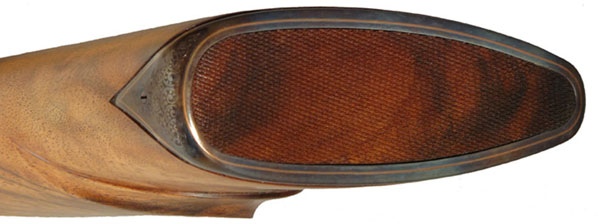
At the owner’s request, all of the original M-S markings on receiver were inlaid in copper. The skeleton grip cap and butt plate are also outlined by subdued copper inlays. The receiver, trigger guard and magazine floor plate are engraved in a modified English rose and scroll pattern. The magazine floor plate is inlaid in gold, silver and copper.

Bottom view showing magazine floor plate, trigger guard and skeleton grip cap. Note absence of screws.
The finishes are Royal hot salt bluing on the barrel, scope bases and rings with color case hardening for the sling bases, magazine bottom, trigger guard, skeleton grip cap and butt plate. The bolt and trigger are heat-treated, medium phosphorous nickel-plated.
The original plan called for the receiver to be color case hardened, but Rocky discovered that, because of the metallurgy of the receiver, this could not be done and still have a safe action. Therefore, the receiver was cold rust blued with the customer’s consent.
A Leupold VX-3 2.5-8x36mm scope was chosen to complement both the rifle and the cartridge for which it is chambered.
Leupold is, by far, the scope brand most commonly chosen for bespoke rifles and the VX-3 2.5-8×36 is, perhaps, Leupold’s most useful and versatile hunting scope.
Practically everyone on the Guns and Shooting Online staff owns one or more of these scopes and can attest to its quality, durability and versatility.
During the building of the rifle, two changes had to be made to the original specification: the aforementioned cold rust bluing of the receiver and deleting the (planned) iron sights.
The original intention to fit the latter was the reason for using quick detachable scope bases. Changes were made to the shape of the receiver; the thinned bolt handle and low rear scope mount cantilever were intended to lower the iron sights as close to the bore as possible.
However, after a trial peep sight was latched to the rear scope base, the required front sight was 1-1/2 inches above the centerline of the barrel. A ramped sight of this height would have been aesthetically unpleasant, so the iron sights were deleted. This turned out to be a Catch 22 situation in that the quick detach bases themselves added nearly ½ inch to the elevation of the scope and the front ramp. Sometimes, the gun itself will dictate how it has to be built.
Specifications
- Type: Bolt action hunting rifle
- Weight: 7 lbs. 2 oz. (bare); 8 lbs. 4 oz. (w/ scope)
- Caliber: 6.5x54mm M-S
- Barrel Length: 22″
- Twist: 1 in 8″
- Overall Length: 43.5″
- Length of Pull: 14.5″ (owner-specified)
- Trigger: Single set – 2.5 pounds (un-set), 1 pound set (owner-specified)
- Safety: Modified Mannlicher-Schoenauer wing safety (bolt mounted)
- Magazine capacity: 5 rounds
- Magazine type: Schoenauer rotary, controlled feed
- Stock: European Walnut w/hand rubbed oil finish
- Checkering: Warp around forend and grip, 26 lpi
- Scope: Leupold VX-3 2.5-8x36mm
- Scope mounts: Quick Detachable
- Metal finishes: High polish hot salt blue (barrel), cold rust blue (receiver) and color case hardening (misc. parts); hand engraved w/inlays
Load Development (by Rocky Hays)
The customer requested hand loads using Woodleigh 160 grain Weldcore and Barnes 130 grain TSX bullets. When I do load development, I blueprint each case, uniform the primer pocket and flash hole, re-size and trim to length. I take portable loading equipment to the range, so I can load one round and shoot it.
That way, the barrel is always cold when fired. In addition, if I have an unacceptable load, I don’t have others like it. I shoot from a bench rest using a Lead Sled and try to hold the gun the same way for each shot. I record weather data and chronograph every shot. The idea is to remove all possible human and weather-induced variables.
I found one line of load data for IMR 4350 powder in an old reloading manual to use as a starting point. 36.8 grains was supposed to yield 2100 feet per second (fps) for the 140 grain bullet and 34.0 grains was supposed to yield 1900 fps for the 160 grain bullet.
The first load tried in the new rifle used 36 grains of Hodgdon 4350 powder and a 130 grain Barnes TSX bullet. Winchester primers and new Norma brass were used for all loads.
The chronographed velocity was 2636 fps 10′ from the muzzle. The fired primer showed signs of slight cratering, so experimenting with this load was discontinued.
The second load I tried was 34 grains of Hodgdon 4350 with a 156 grain Norma bullet. This chronographed at 2555 fps and showed the same slight primer cratering. Again, testing was stopped. I concluded that the old load data was essentially useless with modern bullets and powders in this rifle.
I reduced the minimum load to 32 grains of H4350 and fired 30 test rounds. I switched to Accurate 4350, which lowered the muzzle velocity by about 200 fps. The average 100 yard group size was 2-1/2″ with either 4350 powder, which I regarded as unsatisfactory for this rifle.
I then tried IMR 3031 powder. This yielded an appropriate muzzle velocity of 2124 fps with the 156 grain Norma bullet and a 1-5/16″ group size. Better accuracy, but still not what I was looking for.
I moved on to IMR 4895 powder. 28.8 grains yielded a 1″, five shot group. IMR 4895 clearly agreed with this rifle. It should be noted that the maximum load with IMR 4895, according to the reloading manual, is 34 grains. I exceeded that muzzle velocity by 100 fps with 30 grains of powder.
The following trip to the range was to develop a hunting load using IMR 4895 powder. I used Woodleigh Weldcore 160 grain bullets and Winchester WLR primers. The results were as follows:
powder (gr) velocity (fps) avg. 100 yd. group std. deviation
28.6 2043 1-1/16″ 217
28.8 2110 1″ 107
29 2181 3/4″ 69
29.2 2219 3/4″ 104
29.4 2251 1″ 207
29.6 2278 1-1/8″ 125
29.8 2302 1″ 114
30 2323 1-1/4″ 181
The next range day was devoted to the Barnes 130 grain TSX bullet, with IMR 4895 and Winchester WLR primers:
powder (gr) velocity (fps) avg. 100 yd. group std. deviation
29.8 2094 fps 1-3/4″ 69
30 2145 1-3/4″ 71
30.2 2186 1-1/2″ 57
30.4 2194 15/16″ 62
30.6 2115 15/16″ 53
30.8 2232 5/8″ 14
31 2260 3/4″ 64
31.2 2289 1-1/2″ 87
31.4 2330 2-3/4″ 106
It became obvious that pushing the 130 grain bullet much over 2260 fps in this barrel degraded the accuracy, perhaps due to the 1:8″ twist.
By the end of the third day at the range, I had fired nearly 250 rounds and had developed sufficient loading data for each of the requested bullets. The targets indicated I could switch between the 130 grain and 160 grain bullets without re-adjusting the scope.
Next, I loaded more of the selected loads with 130 and 160 grain bullets and shot both bullet weights at the same target to form a composite group.
The 130 grain bullets produced a group that was centered 7/8″ high and right from the bull’s eye.
The 160 grain group was centered 9/16″ low and left from the bull’s eye, which means that there was only about 1-1/2″ between the centers of impact of the two bullet weights. Compared to the size of a big game animal, this is negligible.
Conclusion
If you are interested in ordering a custom made gun, or would just like to see some of the world’s best custom firearms and meet the builders, take a trip to Reno, Nevada in January.
Every year, the Firearm Engravers Guild of America and the American Custom Gun Makers Guild hold a combined three day show. I strongly recommend that every gun enthusiast go to this show at least once. You will see some amazing firearms up close and in person.
If you attend the Reno show, or in some other way choose a custom gun builder, the first thing to know is that most members of FEGA and ACGG do not consider themselves just “gun makers.” They are artists and guns are their medium. Second, you will need to be patient.
Most of them will not be able to give you a firm completion date. I know of builders who have sent customers’ guns back, unfinished, because the customers became too impatient.
Understand that there are several types of gun makers. One is the gunsmith specialist, who makes the mechanics of the gun–the metal parts. Some of them specialize in only one type of action, such as Mauser 98, Winchester 70, etc.
Then those action parts are sent to an engraver for design and engraving, to a stock maker/checkerer and then to a metal finisher.
The finished parts go back to the original gunsmith, who assembles the gun. The customer can choose an engraver, stock maker and finisher whose style he likes.
You end up with a gun that has several names associated with the finished firearm. Things will usually move faster than if the gun is built and finished entirely by one person.
At the other end of the spectrum are gun makers like Rocky. He is an engraver, machinist, woodworker and metal finisher. When a gun comes into his shop, it almost never leaves until it is finished. You will find that if you choose a gun maker like Rocky, things will move slowly. Rocky has no employees and works entirely alone.
If you are going to have a custom rifle made, the details for every part of the gun should be determined in consultation with the builder. This includes, but is not limited to, the barrel (length, brand, contour, twist and crown), action (type, brand and details), trigger, stock (material, grade, checkering style and coverage, butt plate/recoil pad, dimensions, etc.), all finishes and accessories.
Commissioning a custom gun is literally participating in the design and construction of your own, functional, work of art. It takes a lot of time, effort and decision making to produce a true custom-built gun, but the finished firearm is all yours. It is unique and, as you can tell from the photos accompanying this article, worth the wait.
In closing, we would like to reiterate that the rifle that is the subject of this article was not built to sit in a display case. It was built for hunting and will soon be on safari in Africa. It is not only beautiful, it is completely functional and superior, for the owner’s purpose, to any mass produced rifle.
It fits him perfectly and mounts quickly, to speed that first, all important shot. It has a superior trigger tuned to the owner’s specification and a very smooth, controlled feed action with a rotary magazine for maximum reliability.
It is very accurate using the exact cartridge and bullets specified by the owner. It is, in fact, a superior hunting implement. Of course, he could take an ugly, functionally inferior rifle on safari, but why would he want to if he doesn’t have to?
If this was not in a hard to get caliber, I would not mind at all to buy it! Grumpy
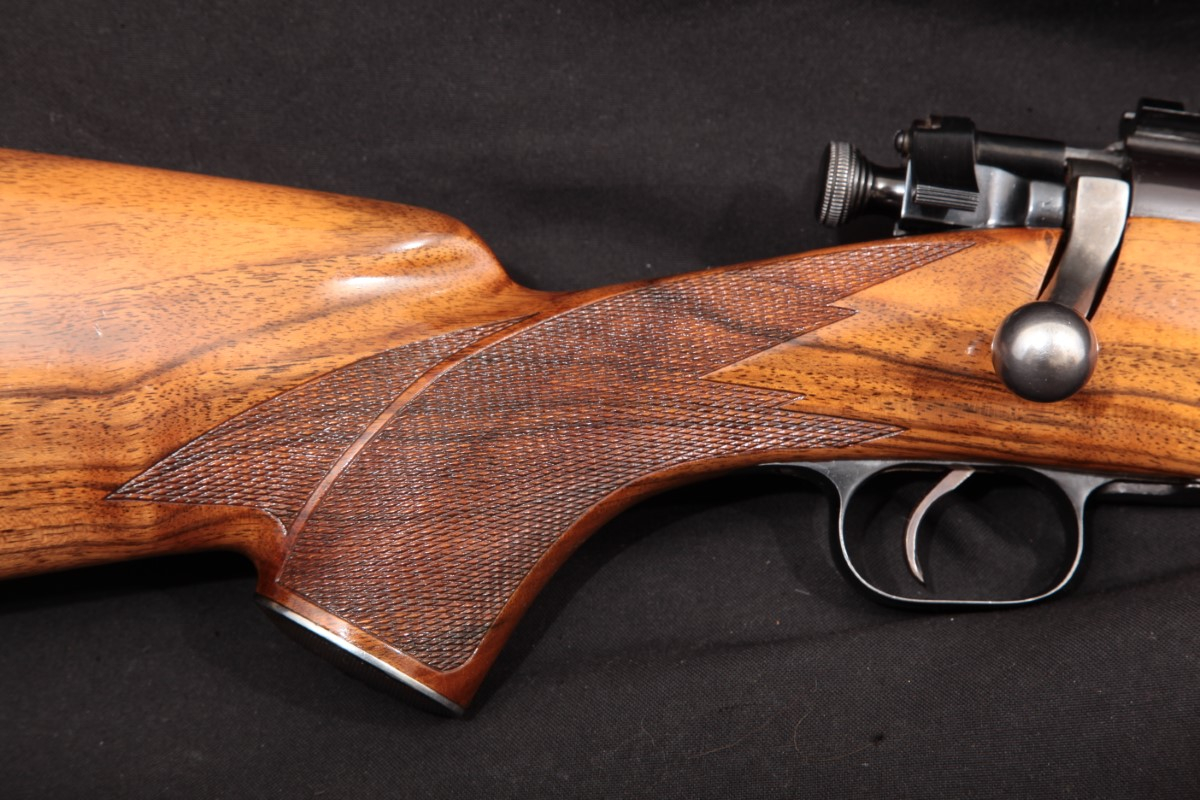
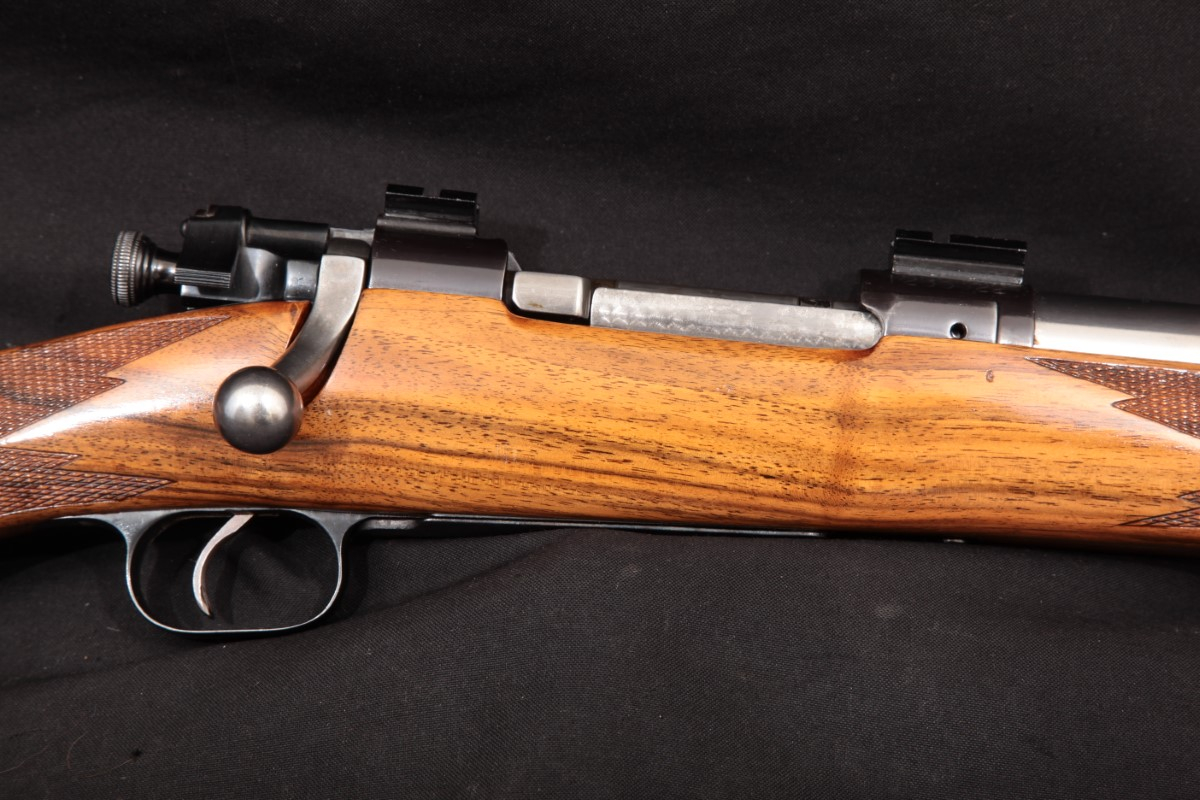
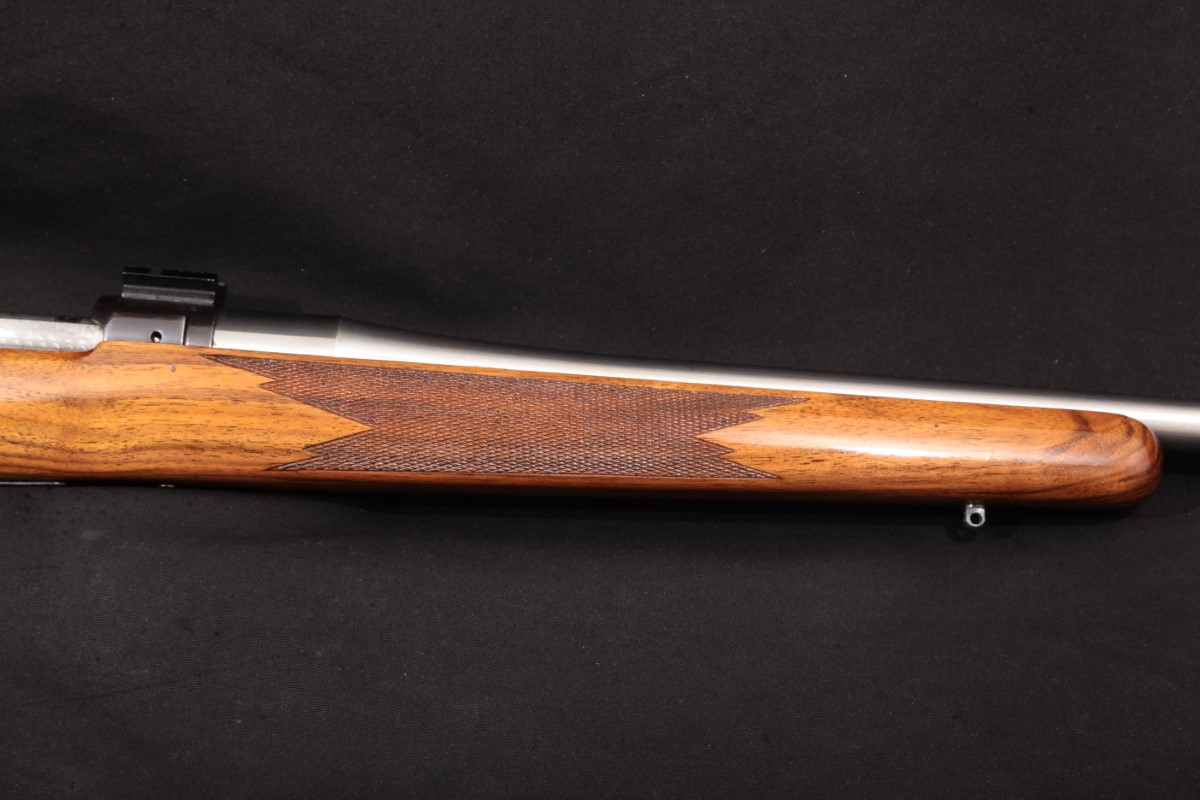
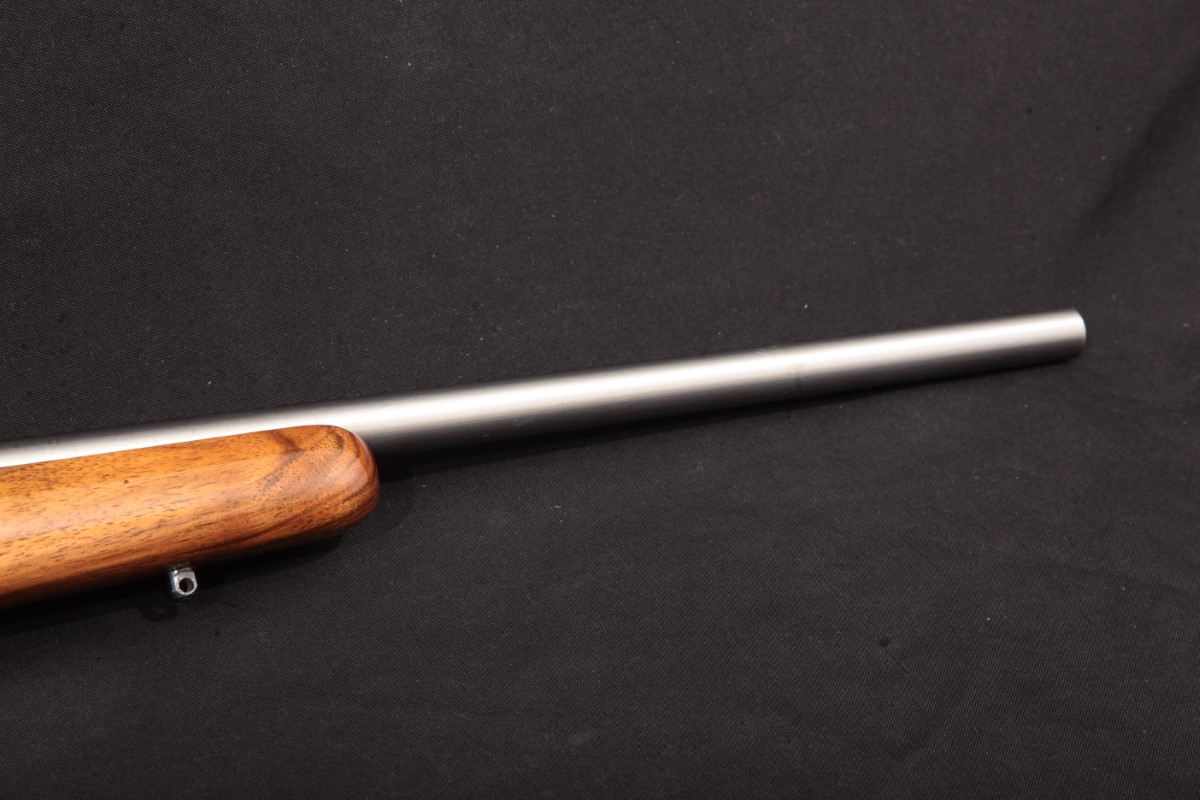
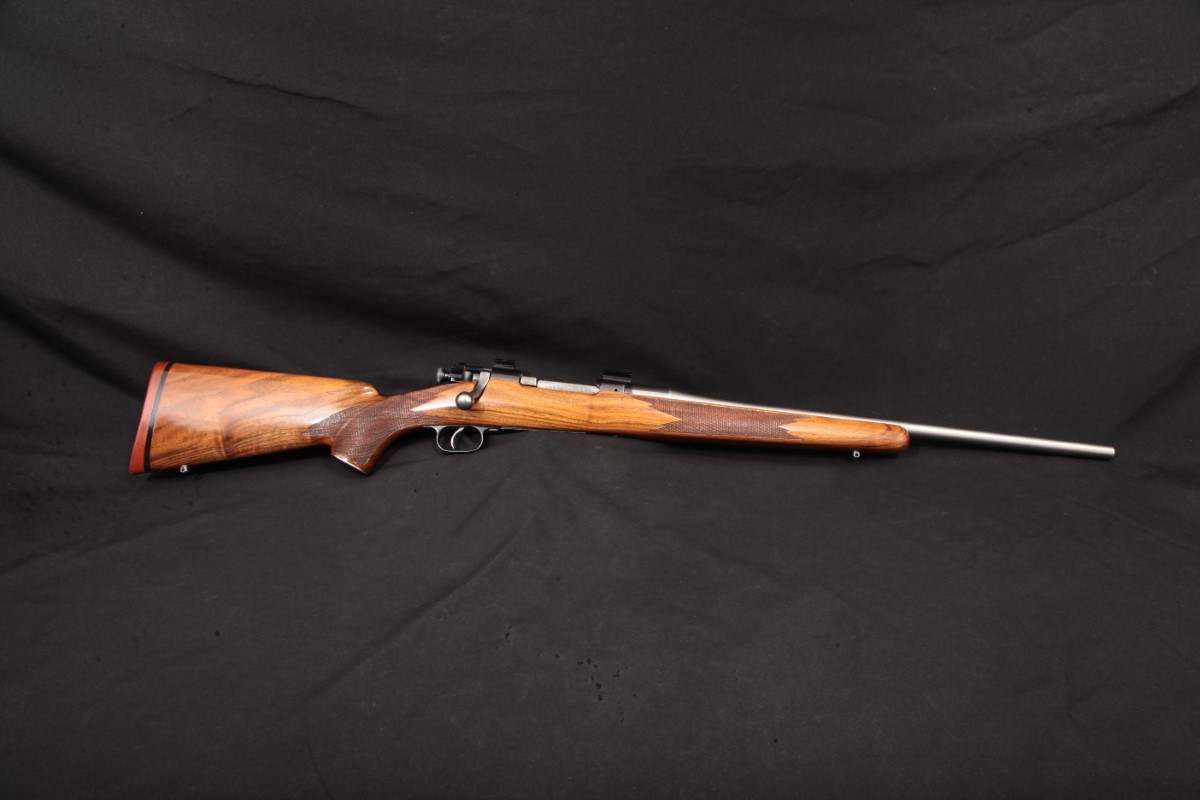
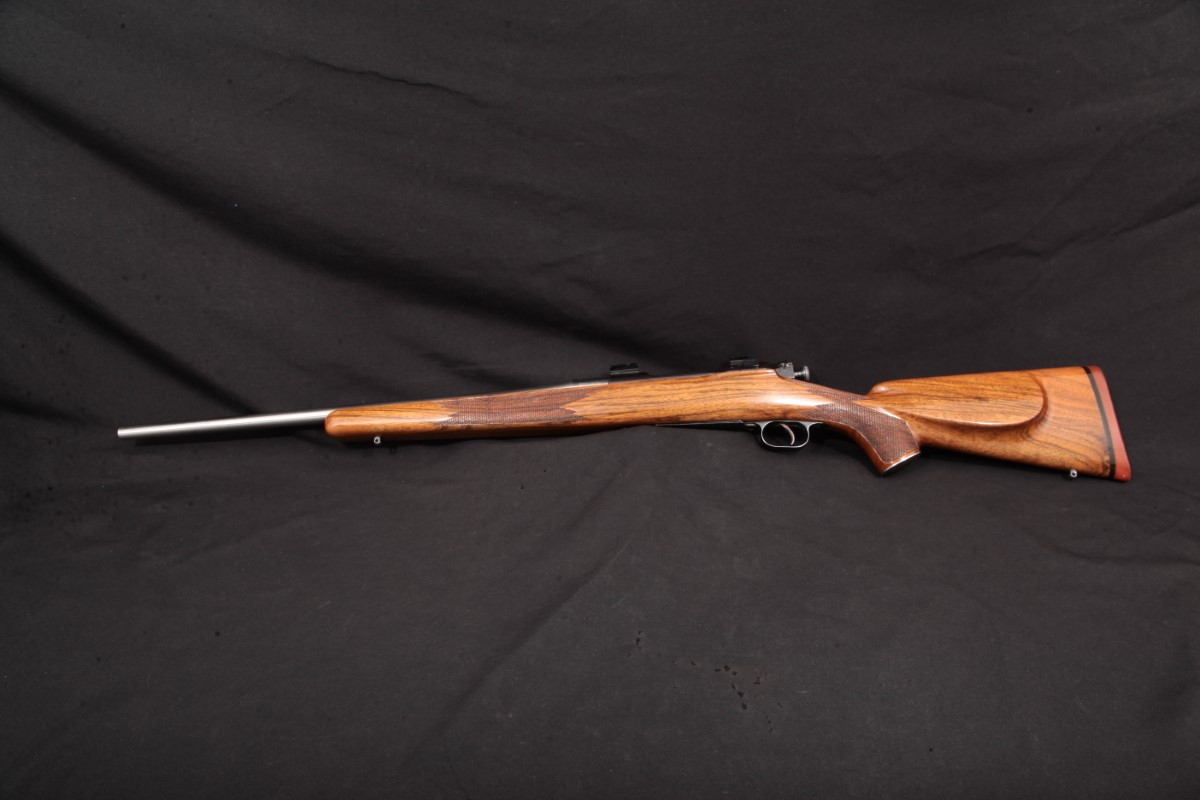
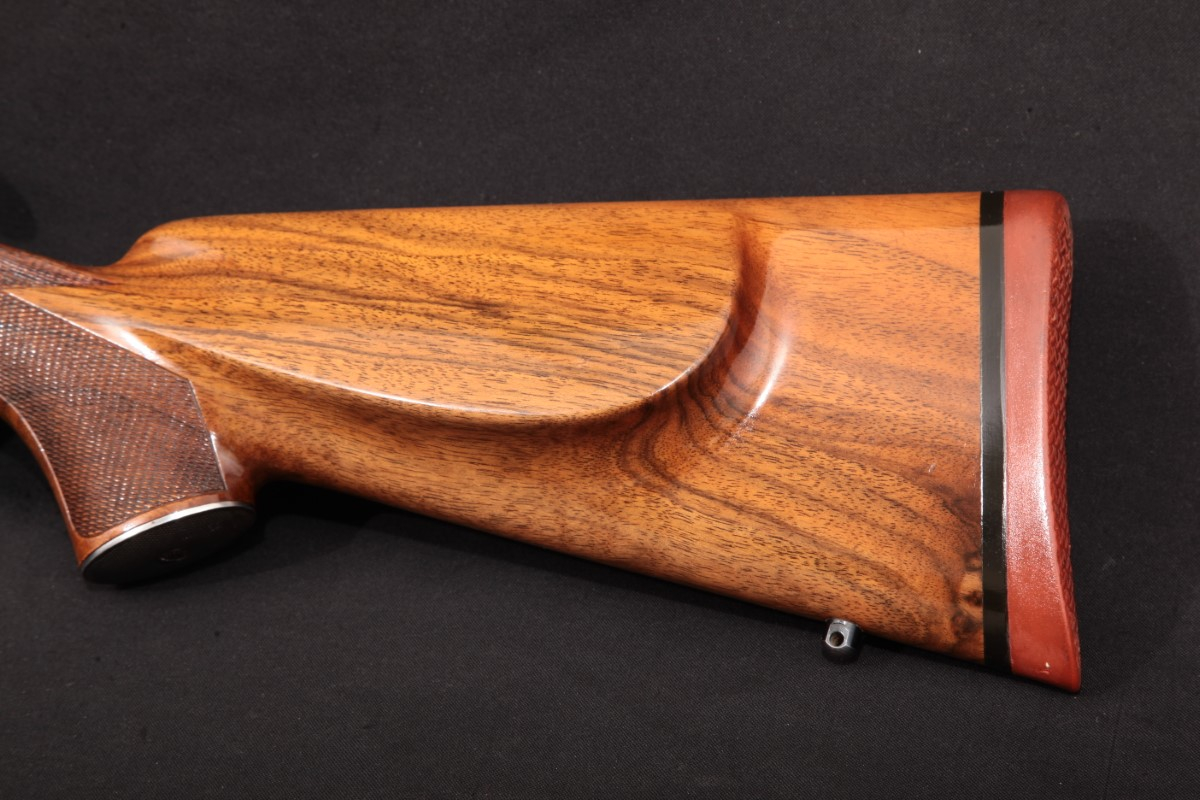
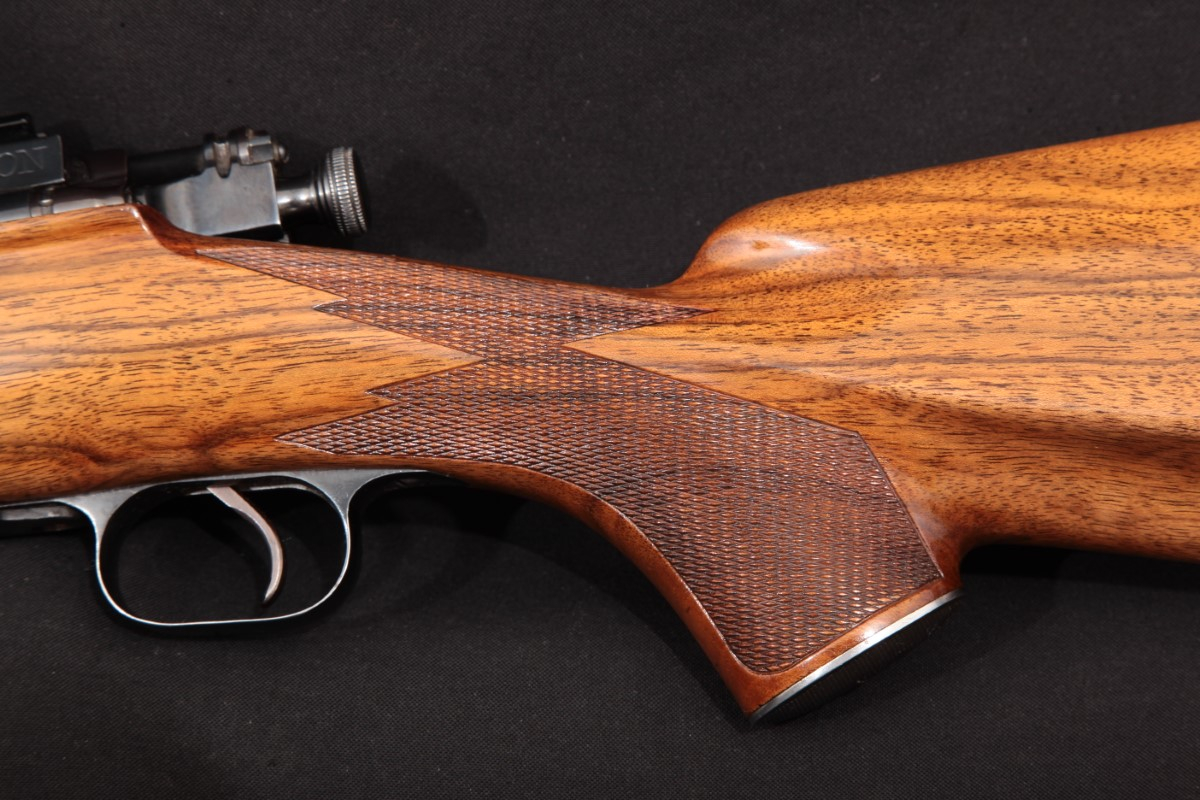
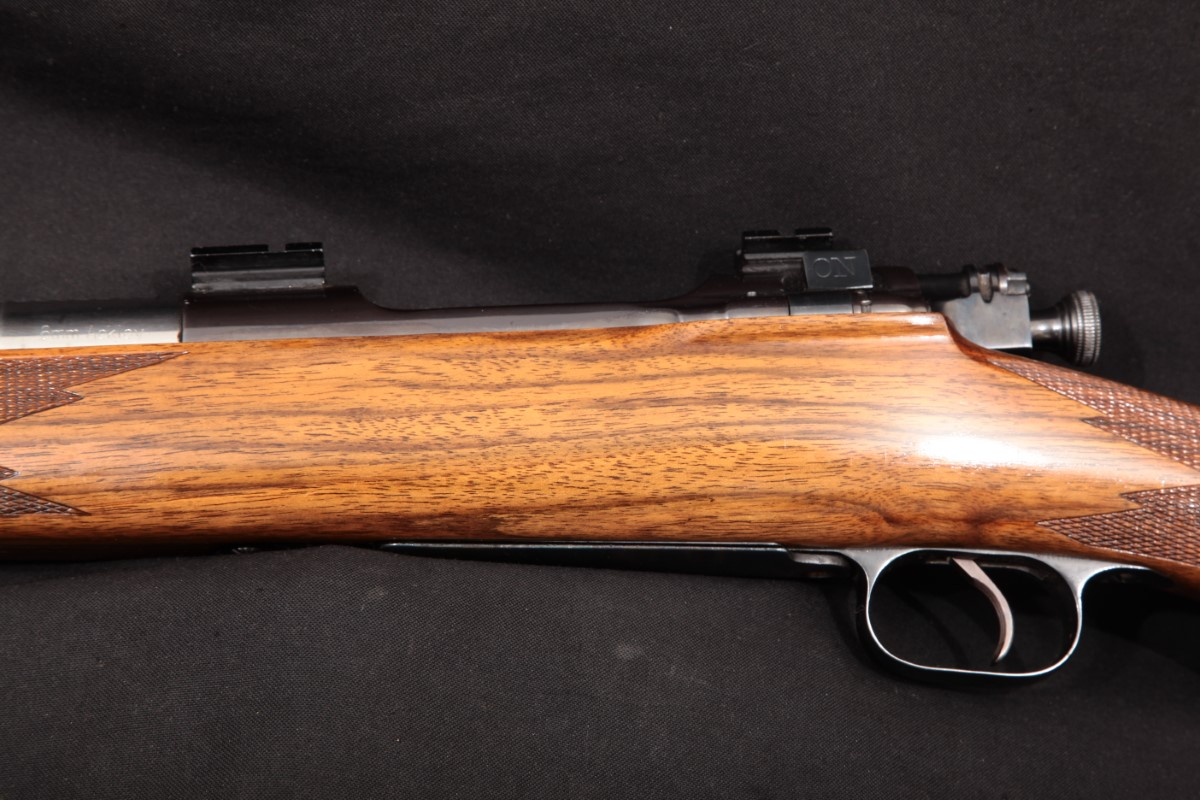
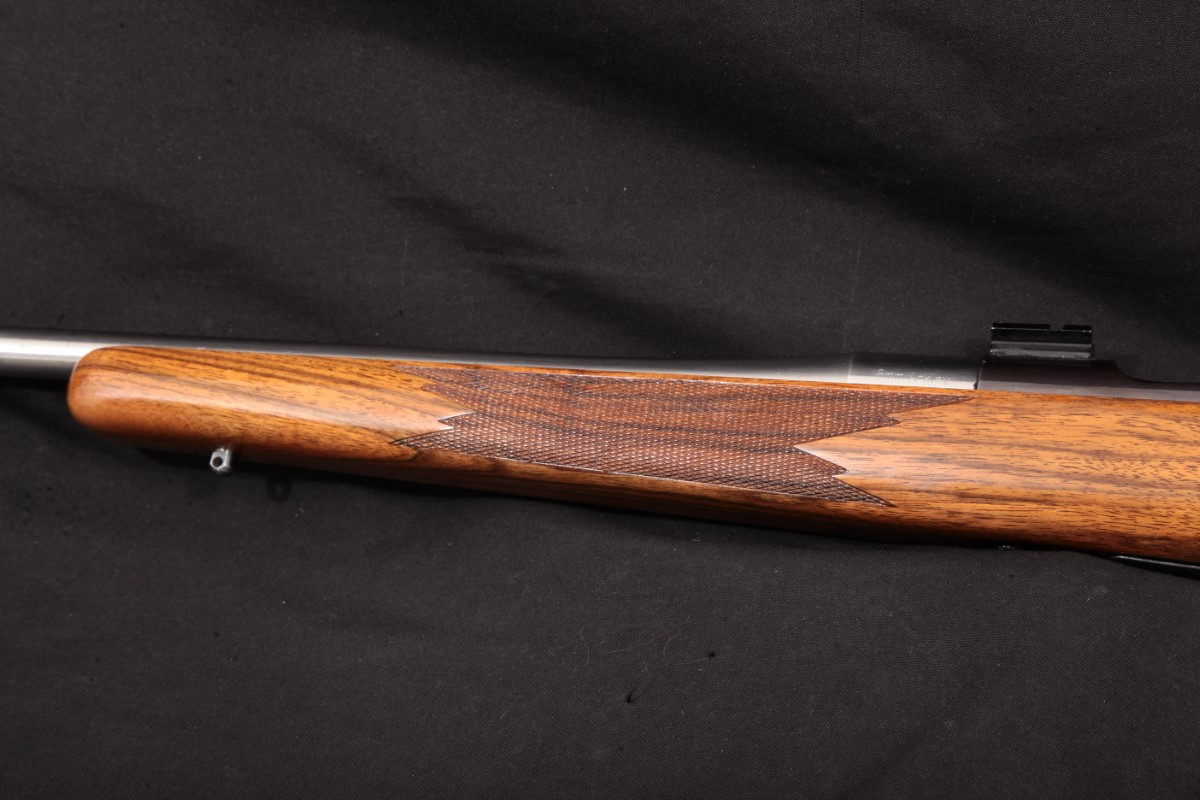
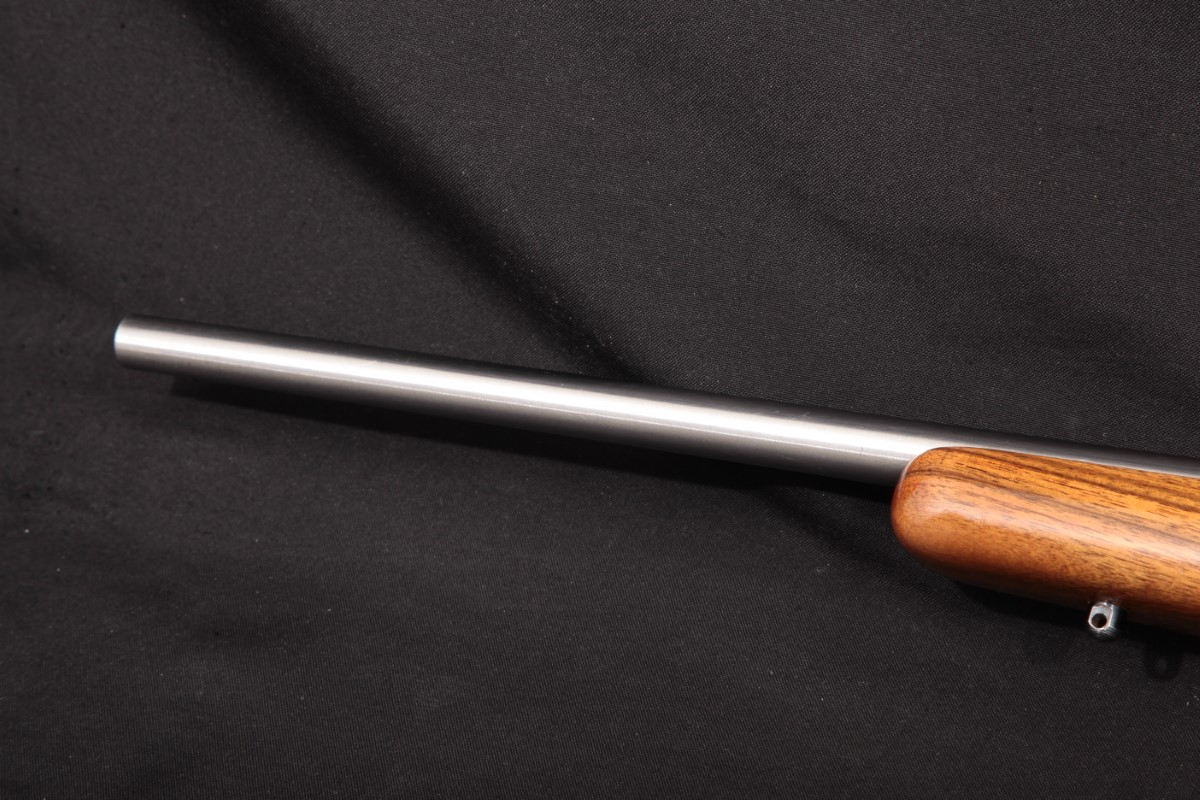
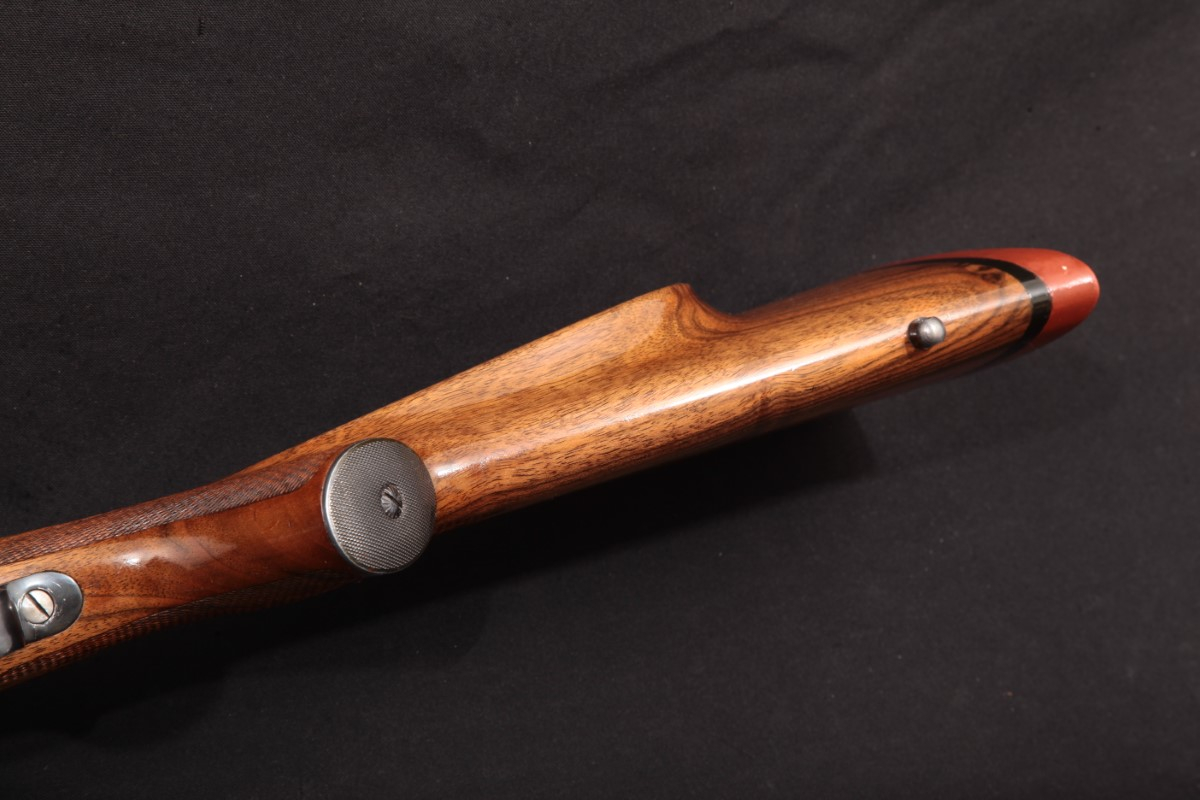
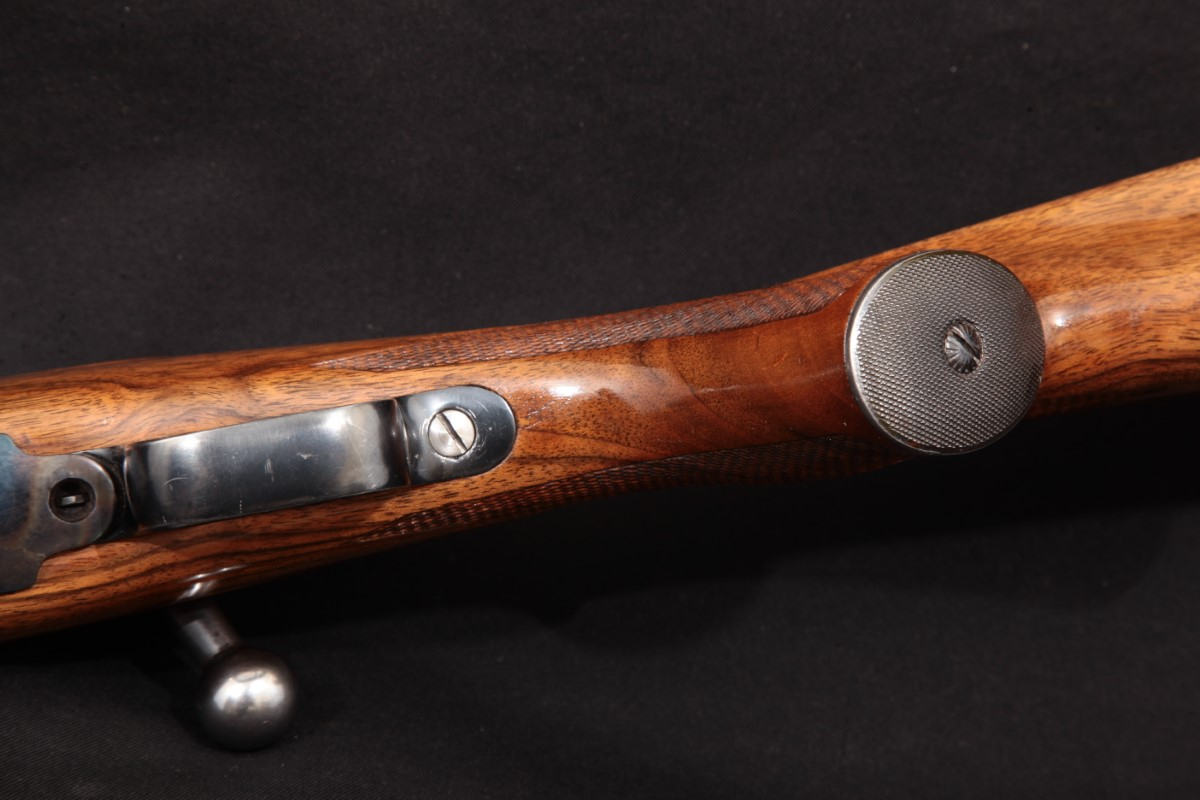
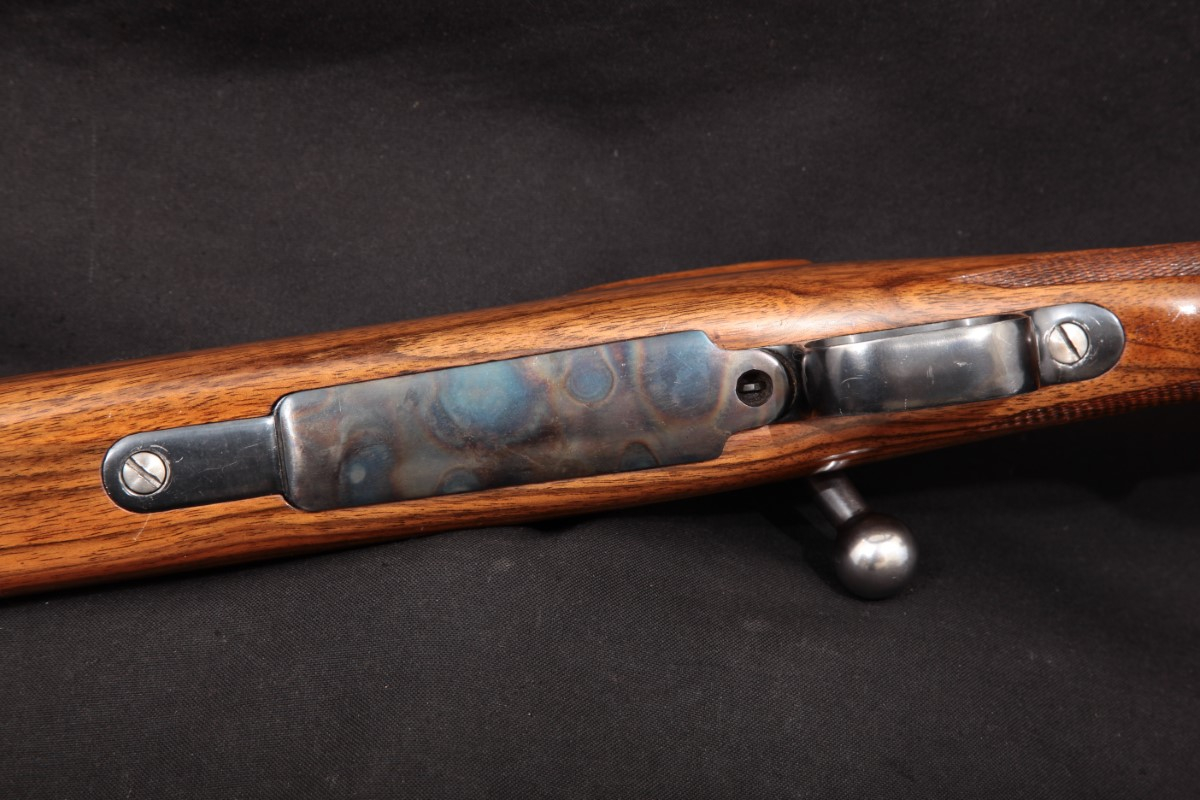
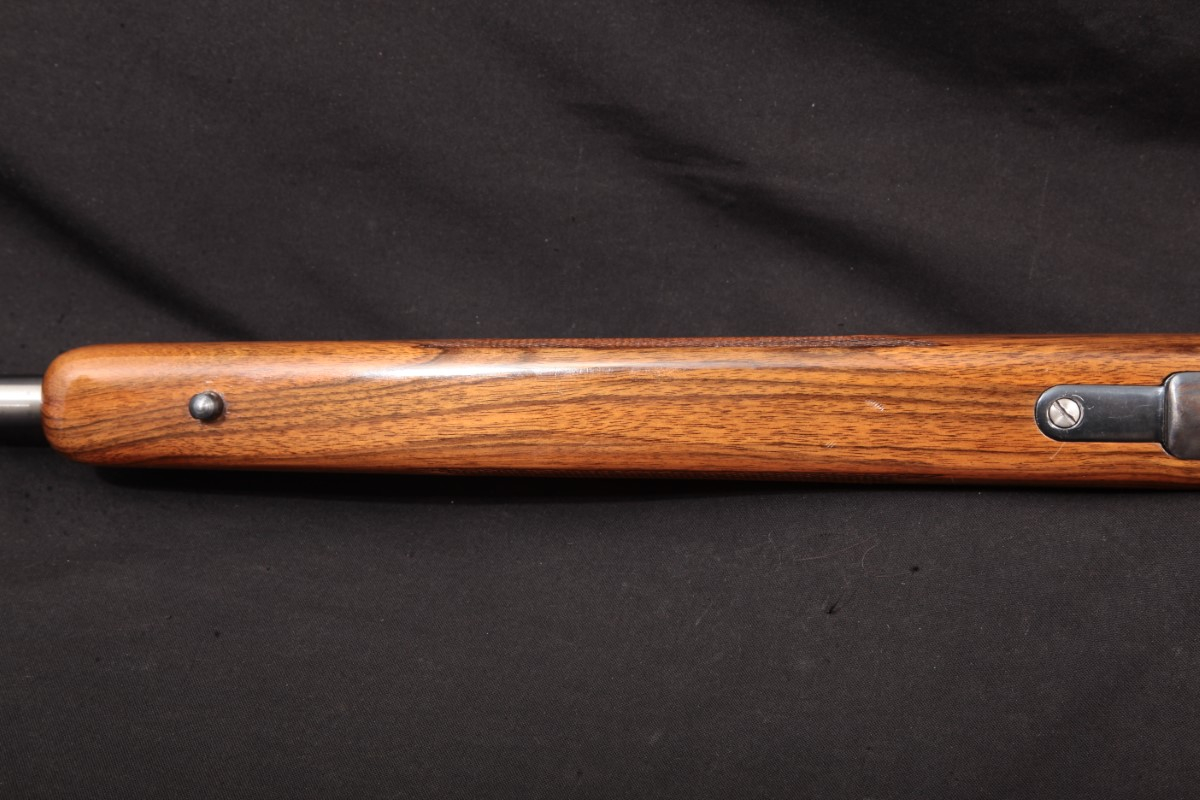
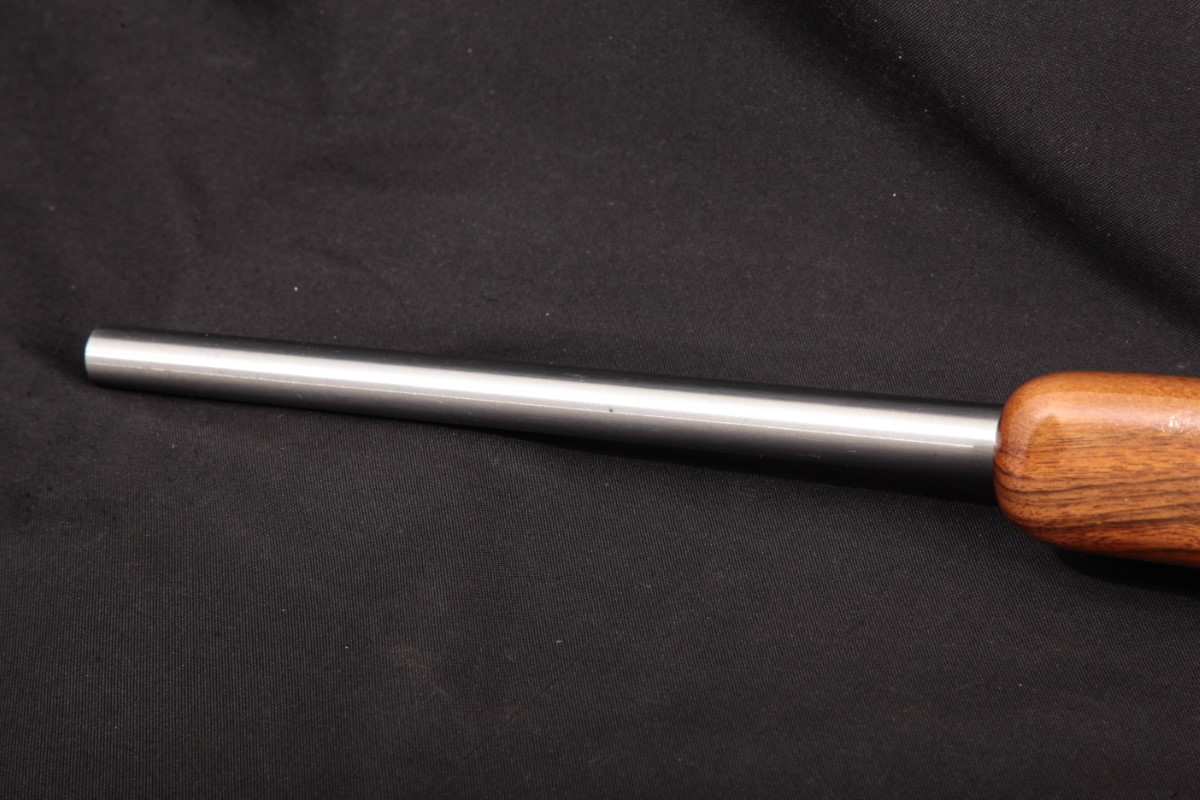
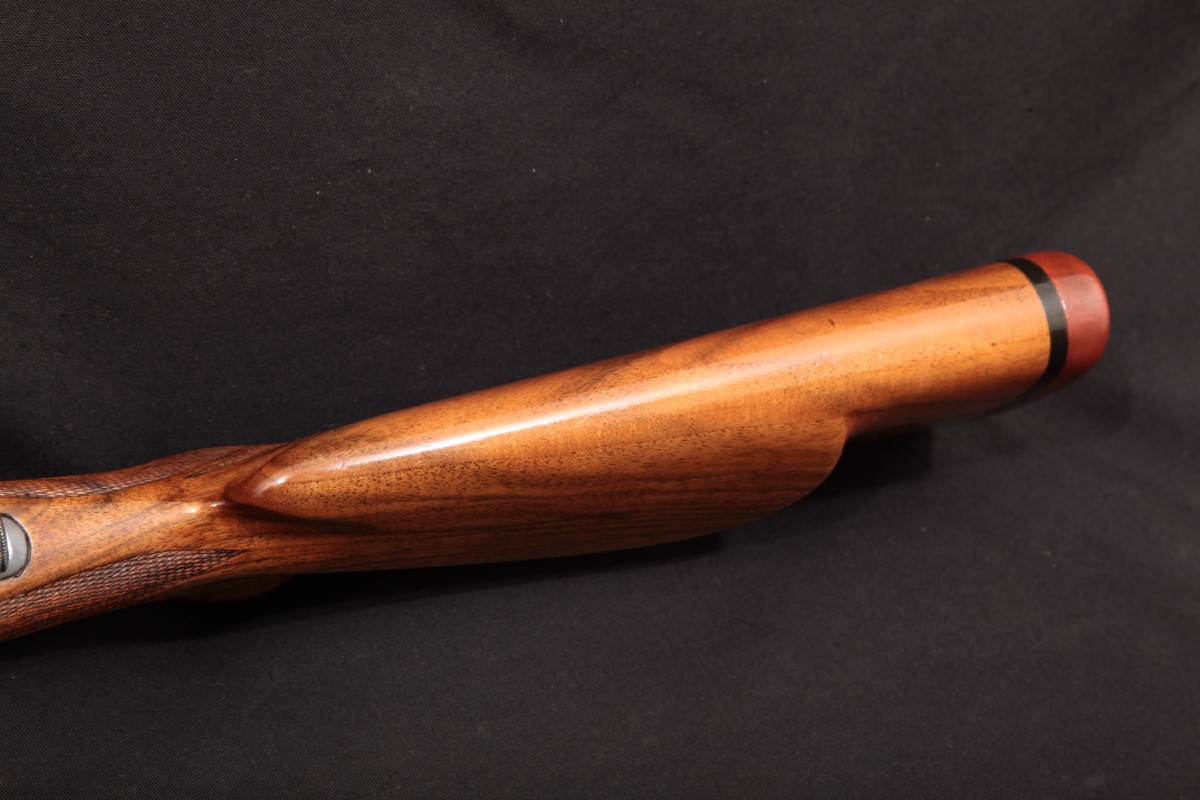
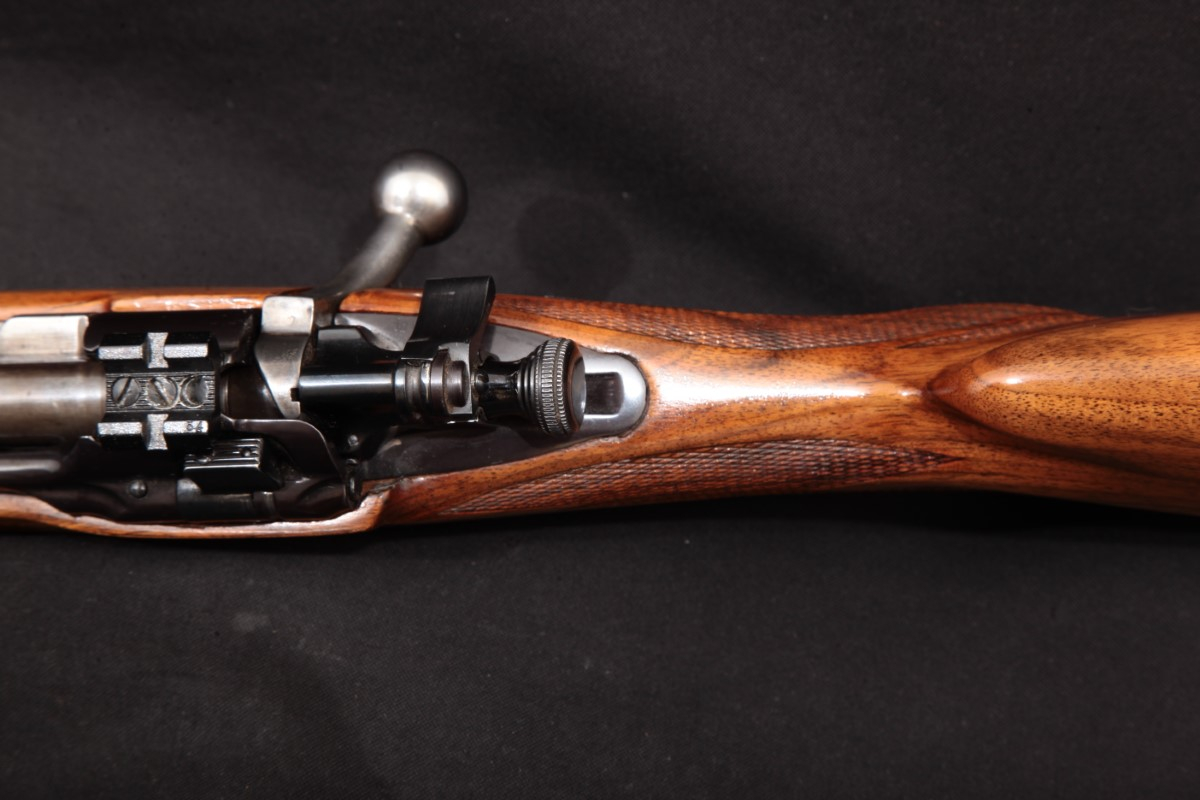
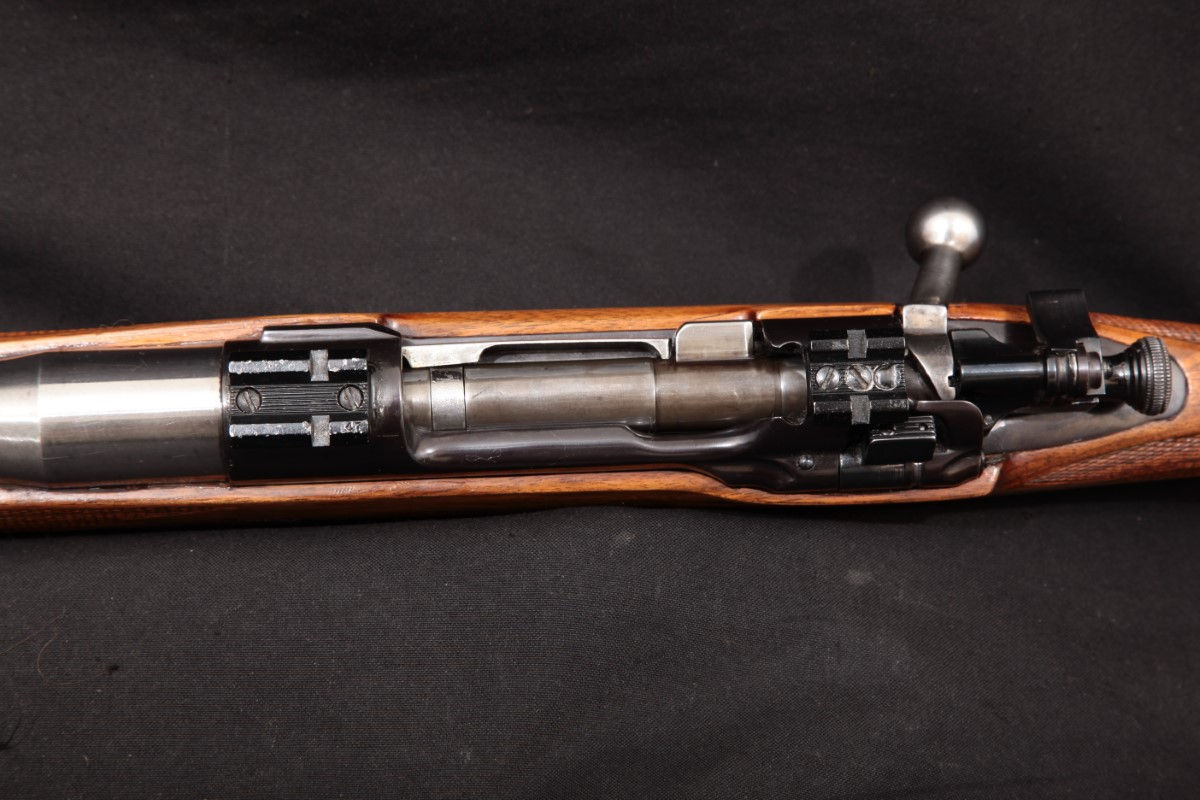
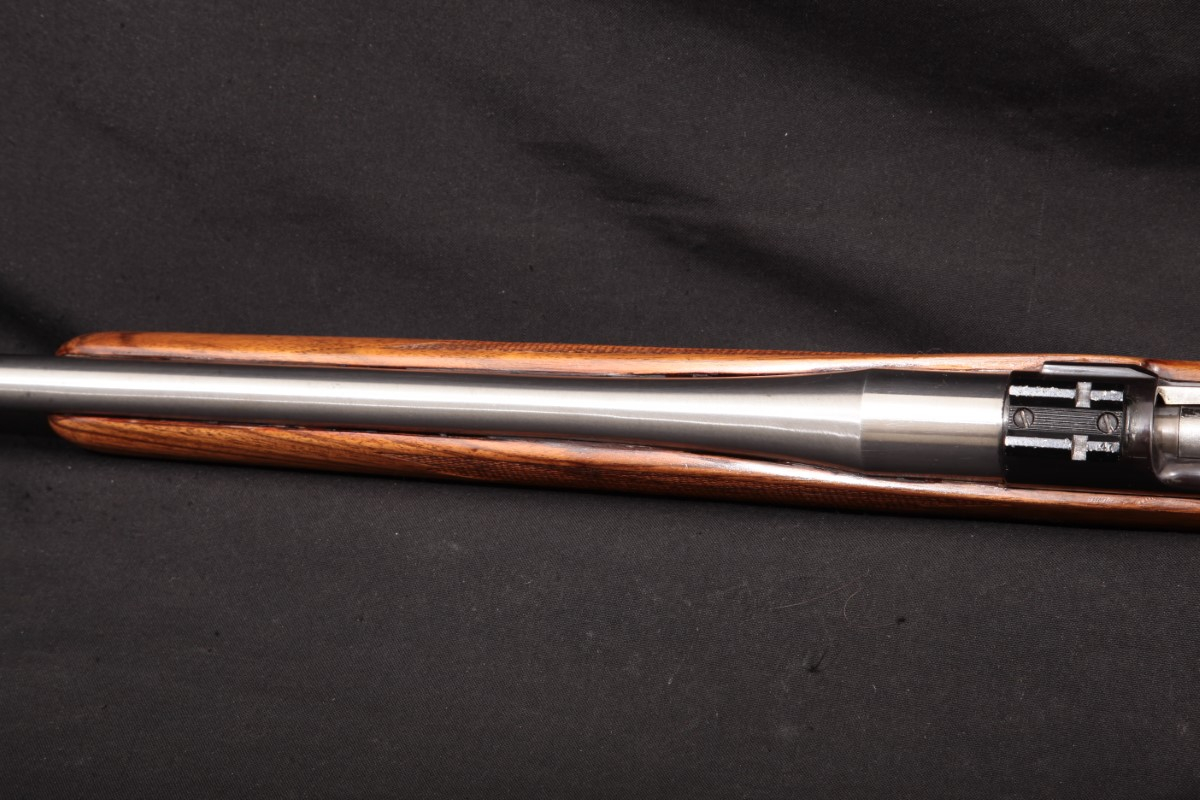
Language: The M16 Comic Book Manual
by Jeremiah Knupp – Sunday, March 24, 2019


The widespread issue of the M16 rifle to troops in Vietnam, beginning in the mid-1960s, was fraught with problems. As reports of M16s failing in combat began to filter in, the U.S. Army scrambled to address the crisis. They found part of that solution in the most American of places—the world of comic books. The M16A1 Rifle: Operation and Preventive Maintenancewas the title of Pamphlet (PAM) 750-30. Combining comic book-like illustrations and humor with invaluable technical information and tips, the pamphlet sought to use a format with which G.I.s were familiar to teach them how to properly maintain their M16s. It would go on to become a classic part of the M16’s story and a contributor to the design’s ultimate success.
Early problems with the M16 had two sources—the propellant specified in the original technical data package for the 5.56×45 mm NATO cartridge was changed, and there was a lack of training and cleaning materials provided for proper maintenance.

Operation “Bang Dong”—PFC Fred L. Greenleaf, Co “C”, 3rd Bn, 7th Inf, 199th Light Inf Bde, crosses a deep irrigation canal along with other members of the company who are enroute to a Viet Cong controlled village. The field conditions that soldiers encountered in Vietnam made daily maintenance of their M16 rifles a life or death necessity. PAM 750-30, the comic book-style M16 manual, gave tips about things like how to drain the water out of one’s rifle.
” … these troops started going overseas, that were trained with another rifle, and suddenly given this new rifle with no equipment, no training manuals or anything, just said ‘Go get ’em, fellows,’ ” Eugene Stoner said in his 1988 interview with small-arms expert Edward Ezell. ” … when you put lack of training, lack of maintenance equipment, and the new propellant, pour them into the same situation all at one time, that’s what caused the big problem.”

A reprint of the classic M16 comic book manual (PAM 750-30), included with each of the rifles in Brownells’ Retro line, is as authentic as the waffle-type magazine that comes with the Brownells BRN-601 pictured.
The June 1968 report of the U.S. Army M16 Review Panel concluded, “The lack of cleaning materials and the lack of proper training contributed heavily to the high M16A1 malfunction rates experienced in Vietnam in late 1966 and early 1967.” PAM 750-30 sought to remedy this.

Members of Co D, 2nd Bn, 35th Inf, 3rd Bde, 4th Inf Div, who came in on the first wave of helicopters secure the landing zone for the remainder of company during a helicopter combat assault and a one day search and destroy mission in the Quang Nagi Province, 8km west of Duc Pho, 10/26/1967.
The 1960s were a period of time that aficionados call the “Silver Age of Comic Books.” That decade saw the introduction of such characters as Daredevil, Spider Man, Iron Man, the X-Men and the Fantastic Four. Most American boys of that generation had grown up reading comic books. The average U.S. infantryman in Vietnam was in his early 20s … and still reading comics. What better way to get him to learn about maintenance than to make a manual in the form of a comic book?

The artistic talent behind PAM 750-30 was Will Eisner. No stranger to the world of comic books, Eisner had gotten his start as an author and illustrator in the earliest days of American comics in the 1930s, and was the creator of the urban crime fighting character, “The Spirit.” During World War II, Eisner was drafted into the U.S. Army, which quickly found a use for his skills in the production of training manuals. Eisner was assigned to Holabird Ordnance Depot in Baltimore where Army Motors, a preventive maintenance magazine, was being printed.
“Together with the people there … I helped develop its format. I began doing cartoons—and we began fashioning a magazine that had the ability to talk to the G.I.s in their language,” Eisner said in a 1978 interview in Comics Journal. “So I began to use comics as a teaching tool, and when I got to Washington, they assigned me to the business of teaching—or selling—preventive maintenance. Preventive maintenance required voluntary cooperation on the part of the readers—the G.I.s. The military was faced with the problem of getting voluntary performance from its troops, so I proposed that one teaching tool that would be very viable would be comics—and they allowed me to try it.”

A World War II poster illustrated by Will Eisner that encouraged soldiers to keep their rifles cleaned. Eisner worked on “Army Motors,” a monthly preventative maintenance magazine, that would later evolve into “PS Magazine, The Preventive Maintenance Monthly.”
Following the war, Eisner established American Visuals Corporation (AVC), a business focusing on what he called “the commercial application of comics.” When the Korean War started, the Army asked AVC to make a successor to Army Motors. Called PS Magazine, The Preventive Maintenance Monthly, Eisner and AVC would produce it for the U.S. Army from 1951 to 1972. An archive of all of Eisner’s issues of PS Magazine is available online through the Virginia Commonwealth University Library.

An article on using the M60 machine gun in helicopters from Issue 172 in 1967 of “PS Magazine, The Preventive Maintenance Monthly,” a series of U.S. Army technical bulletins that used comic book-style illustrations by Will Eisner from 1951 to 1972.
“WE HAVE THE WORLD’S BEST EQUIPMENT … Take care of it,” PS Magazine declared. It covered topics that ranged from adjusting the headspace on 155 mm howitzers to sample checking aircraft oil. As a “post script” to official Army technical manuals it also gave tips on making field expedient fixes or constructing improvised tools. Many of the articles focused on small arms care, with titles like “Don’t Double Cross Your BAR” and “Winterize Your Shooter When You Anti-Freeze Your Scooter.” A 1965 issue (#150) introduced maintenance for the rifle the magazine called the “Sweet 16.” “There ‘re not too many 5.56×45 mm NATO M16 and XM16E1 rifles around as yet,” it stated. “But they’re where they do the most good.”

A reprint of the classic M16 comic book manual (PAM 750-30) is included with retro-style AR-15 rifles from companies like Troy Industries and Brownells (the Brownells BRN-601 pictures).

In 1968, in response to the problems the M16 was having in Vietnam, Eisner was called upon to produce a standalone maintenance manual specifically for the M16. The result was PAM 750-30. Like PS Magazine of that time period, the modern reader will find the illustrations and innuendo used in the manual hardly PC. It started out with detailed instructions for disassembly and reassembly (“How to Strip Your Baby”), then on to immediate action drills in case of a stoppage (“What to Do in a Jam”) and on to detailed instructions on everything from magazine maintenance (“Putting Maggie Together”) to clearing out a water logged M16 (“Drain Before Shooting”). The result was invaluable information presented in a format that appealed to the 20-something 1960s male. Was Eisner’s comic book M16 manual a success? Over 50 years later the M16 design still soldiers on in the U.S. military.

After his work with PS Magazine ended in 1972, Eisner returned to the world of traditional comics. He continued to write and illustrate comic books, helped establish the modern graphic novel genre, and served as a teacher and comic book historian until his death in 2005. His M16 comic book manual ranks up there with “The Spirit” as one of his most lasting and well-known achievements. An entire generation of American G.I.s were familiar with it and, recently, it has been introduced to a whole new generation of M16/AR-15 users. Long out of copyright, the manual has been placed back in print, with manufacturers like Brownells and Troy Industries supplying one with each of the retro-style rifles that they sell.
Though its style and language are dated, the technical advice and tips given in PAM 750-30 are still some of the best preventive maintenance information you can get on the M16/AR-15 series of rifles. The comic book manual was a uniquely American solution to a serious crisis and contributed a small part to the success of the design now considered “America’s Rifle.”

What an idiot! Because you just know that Mommy Bear is close by and REALLY PISSED OFF!
___________________________________ Here is a little Tip in Field craft. In that Walt Disney’s world has nothing what so ever to do with the REAL WORLD. If you see any wild animal, Do Not Get Closer to it but instead put it in Reverse and get out of the Area.
